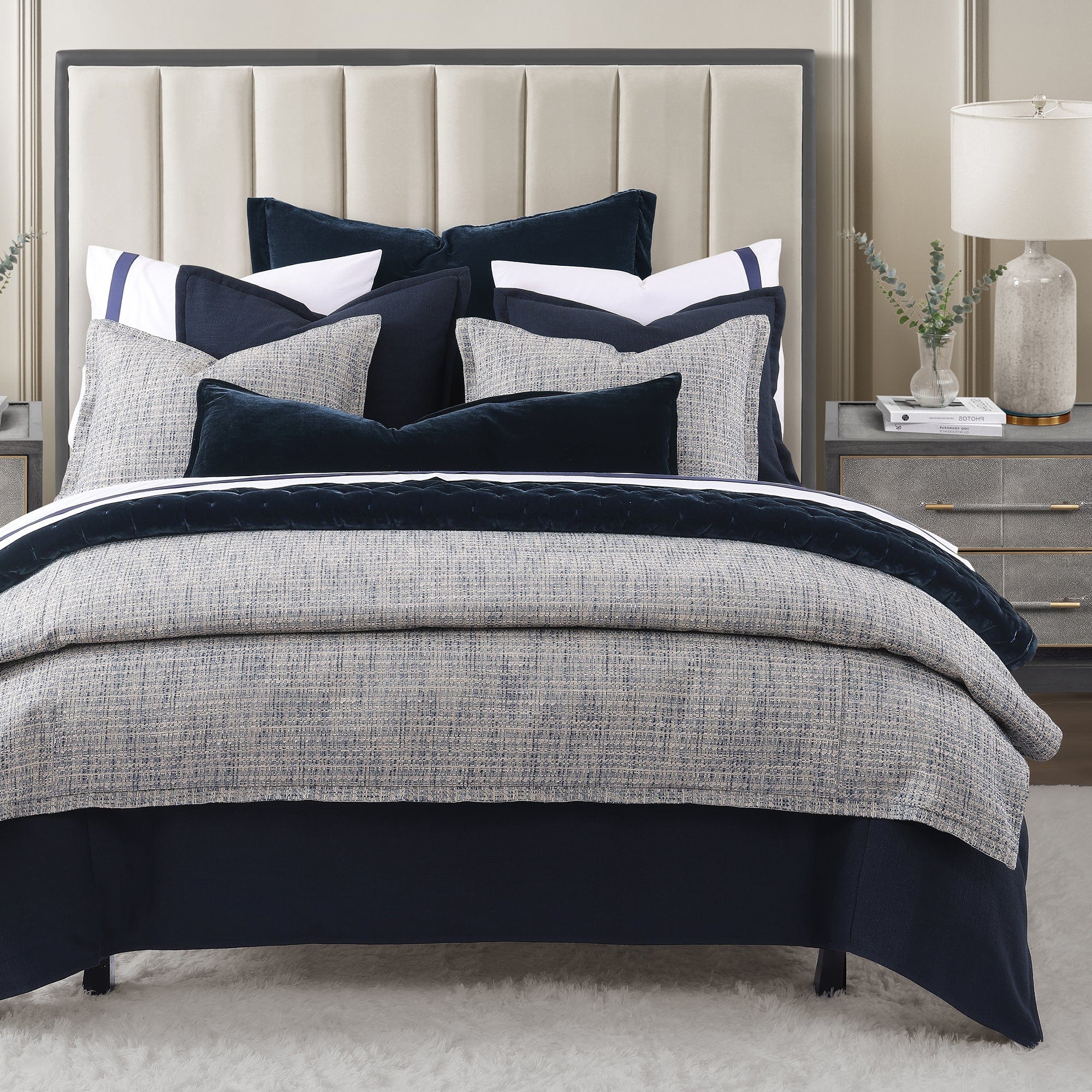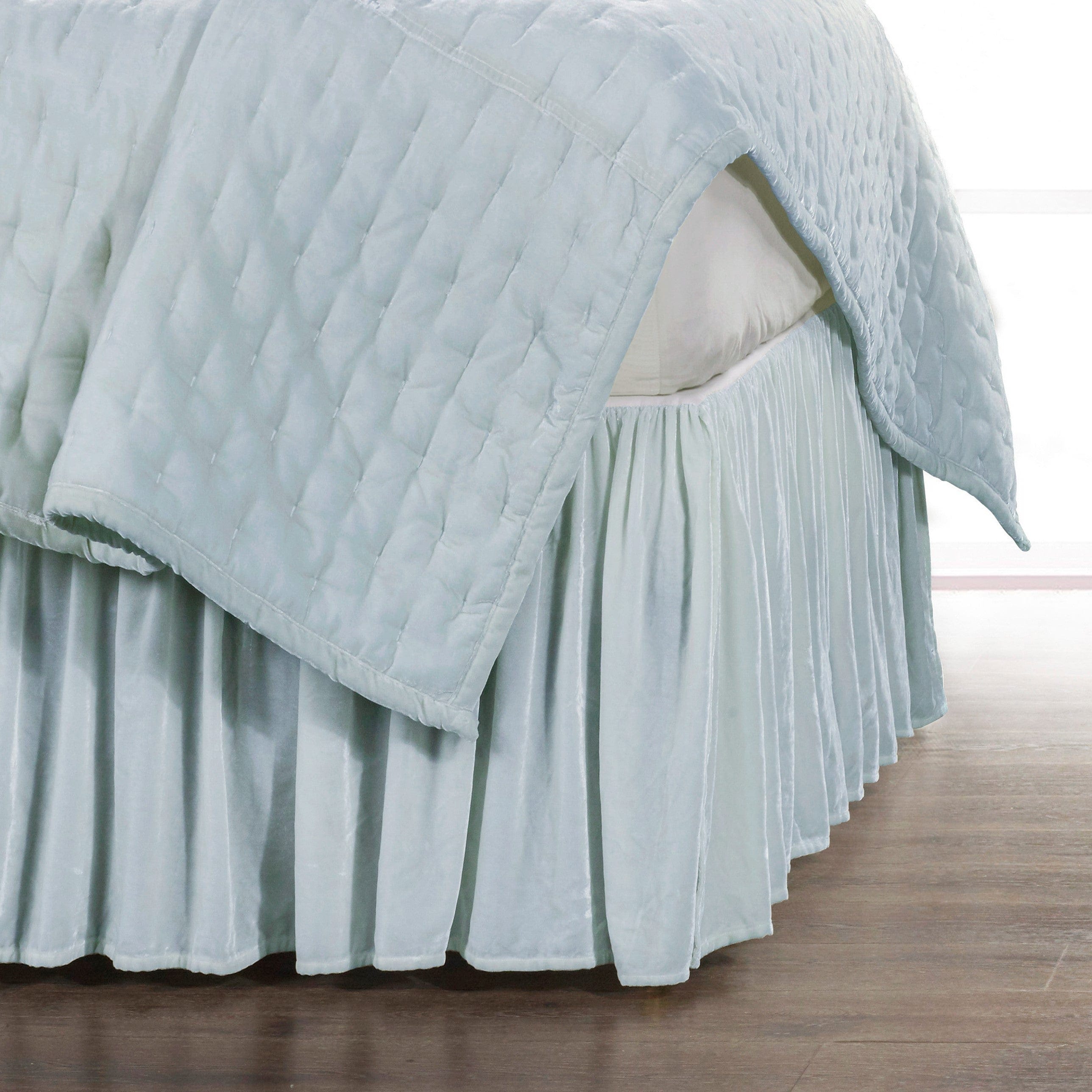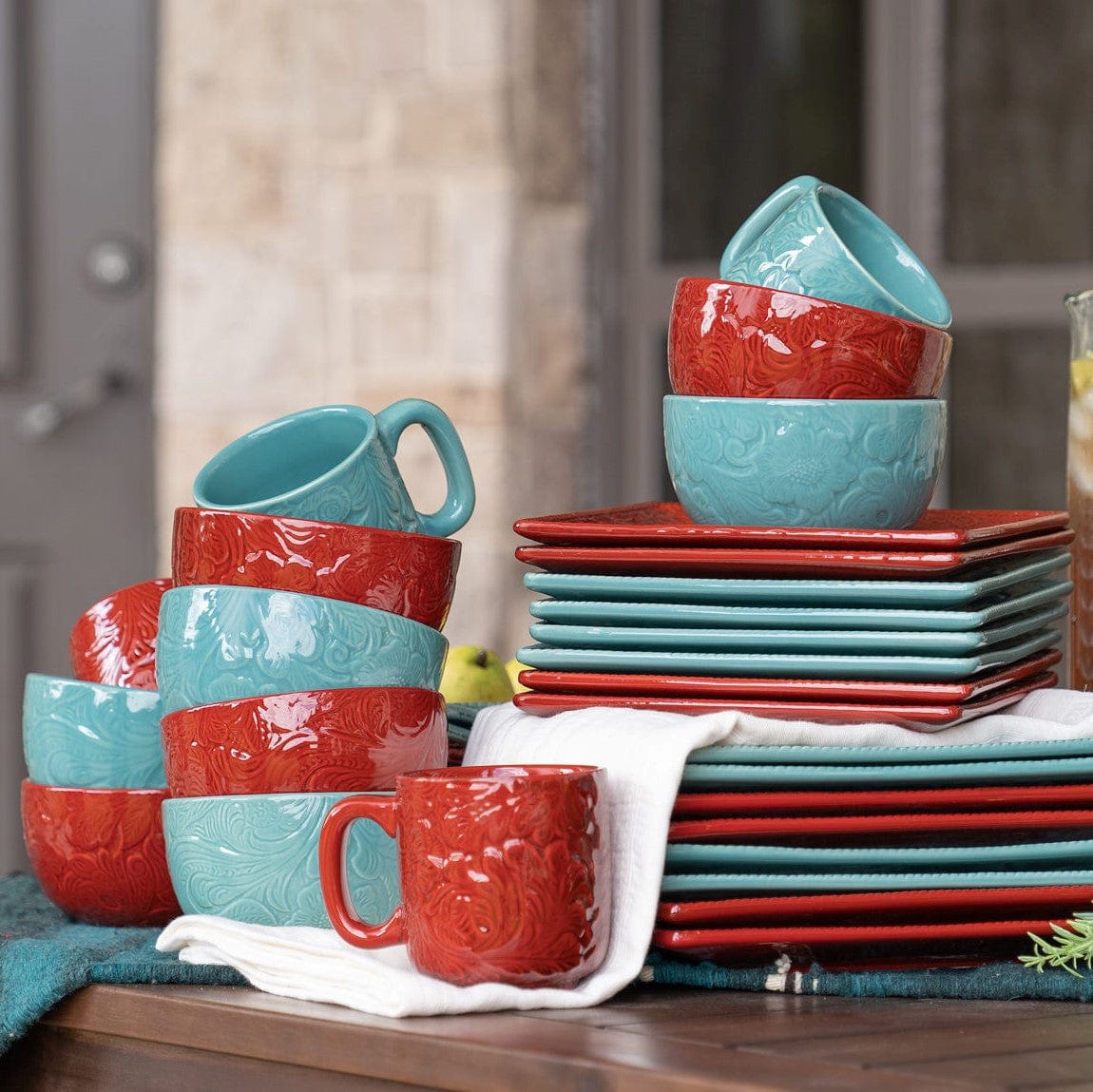Comforter vs Duvet: Which One Is for You?
Comforter or duvet? If you’re reading this, you’ve probably confused one for the other at some point. Knowing the difference between comforter and duvet will help you pick the right item for your bedroom.
In this post, we’ll discuss everything you need to know about the difference between comforter and duvet — their pros and cons, the materials they’re made of, maintenance requirements, and much more. By the end of this article, you'll have all the information you need to choose which one will best meet your sleep needs. So let's get started!
What is a Comforter?
Comforter definition: A comforter is a type of bedding that typically consists of a fluffy, insulated material filled with down, feathers, wool, or synthetic fibers and is used to provide warmth and comfort. Comforters are usually rectangular and designed to cover the entire mattress and hang over the sides for additional coverage.
Type of Materials Used in Comforter
1. Cotton
Cotton is a popular material for comforters due to its breathability, softness, and durability. It's a natural fiber that's easy to care for and is generally hypoallergenic, making it a great option for those with allergies or sensitive skin. Cotton is versatile and can be woven with different techniques, such as French matelassé, sateen, etc. It can also be blended with other fabrics, such as linen and polyester, to create different textures and appearances.
2. Linen
Linen is a versatile fabric made from the flax plant's fibers. It's durable, moisture-wicking, and naturally breathable, making it commonly used as bedding for hotter and more humid months. Linen is usually crisp, but washed linen feels remarkably soft and smooth. Similarly, linen is blended with fabrics like viscose or polyester to achieve different hand feels and styles.
3. Polyester
Polyester is a synthetic material often used as a filling or cover material for comforters. It's lightweight, warm, and affordable, making it a popular choice. It's versatile and can be woven into different textures and patterns, like jacquard, chenille, paisley, etc.
4. Silk
Silk is a luxurious and lightweight material that's great for warm weather. It's breathable and moisture-wicking, which helps regulate body temperature and prevent overheating. However, silk comforters can be expensive and require special care when washing.
How to Take Care of Your Comforter
- Read the care label: The care label on your comforter will provide you with all the information you need to take proper care of it. It may tell you whether you should machine wash, hand-wash, or dry clean your comforter.
- Washing: Check whether your comforter can be machine-washed or requires hand washing. Use a mild, hypoallergenic detergent and wash in cold water on a gentle cycle. Avoid using bleach, fabric softeners, or harsh detergents.
- Drying: Tumble dry your comforter on a low heat setting. Add a couple of clean tennis balls or dryer balls to help fluff the filling and prevent clumping. Avoid over-drying, which can damage the filling, and never use high heat.
- Dry cleaning: If your comforter requires dry cleaning, take it to a professional cleaner specializing in cleaning bedding items. Be sure to point out any stains or spots that require extra attention.
- Protection from dust mites & stains: To protect your comforter from dust mites and stains, it's best to use a duvet cover. The duvet cover can be removed and washed more frequently than the comforter.
- Storage: When storing your comforter, make sure it is clean and completely dry. Avoid storing it in plastic bags, which can trap moisture and lead to mildew growth. Instead, use a breathable fabric bag or a cotton sheet to cover it. Store it in a cool, dry place away from direct sunlight and humidity.
Pros & Cons of Using Comforters
Pros
- Convenience: Comforters are easy to use. Just lay them on your bed, and you’re good to go. There is no need for additional covers.
- Warmth: Comforters are usually thicker and provide more warmth than duvet covers.
- Cost-effective: Comforters are often less expensive than buying a duvet insert and cover separately.
Cons
- Cleaning: Cleaning comforters can be a hassle since they’re big and bulky. There are certain types of washing machines that aren’t suitable for washing comforters properly.
- Styling: Unlike duvet covers, comforters often have limited design options and may not match your preferred aesthetic.
- Durability: Regular use and washing can flatten comforters and make them lose their fluffiness over time.
What is a Duvet Cover or Duvet?
Duvet definition: A duvet is a type of bedding that often consists of two fabric pieces that come together to form a single coverage for your duvet or comforter. It’s designed to protect the filling or insert inside and add style and color to any bedroom. It’s usually secured with buttons or ties at the corners.
Type of Materials Used in Duvets
Duvets (specifically duvet covers) can be made from various materials, and the right one for you will depend on your preference.
1. Cotton
Cotton is also a popular material used for duvet covers as it is lightweight and breathable, making it ideal for hot summer nights. It’s also easy to care for, so you won’t have to worry about accidentally ruining it in the wash. A durable cotton canvas duvet cover should be a nice, cozy addition to a rustic or outdoor-themed bedroom. On the other hand, an elegant sateen weave, a damask-inspired piece, or a French matelassé duvet cover should be a luxurious complement to an elegant and sophisticated room.
2. Linen
Linen is another great choice if you want a slightly more luxurious feel to your bedding. While linen can be more expensive than cotton, its softness and durability make it worth the extra cost. If you want something softer with a textured look, a viscose-linen blend or washed linen duvet cover is a fantastic option.
3. Lyocell
Lyocell is an eco-friendly fabric gaining popularity due to its hypoallergenic properties, breathability, moisture-wicking capabilities, and wrinkle resistance. It’s perfect for those who want something lightweight and cool.
4. Polyester
Polyester is a popular choice for those who prefer a budget-friendly alternative. It’s affordable and has good wrinkle resistance, so it lasts long. Many polyester duvet covers also come in stylish prints and colors that can add some pizzazz to your bedroom decor.
5. Silk
Silk is an ultra-luxurious fabric often used in high-end bedding collections. Its softness and sheen make it extra special, but at the same time, it’s quite delicate and requires extra care when washing or storing. If you want something similar without breaking the bank, faux silk velvet duvet covers offer the same luxurious look and feel but with more durability.
How to Take Care of Your Duvet Cover
Duvets and duvet covers will last many years with proper care and maintenance. Here are some tips to ensure that your duvet cover stays looking its best:
-
Read the care label: Always read the care label attached to the duvet cover or insert before washing. It should provide detailed instructions on how to clean the fabric properly.
-
Washing: Depending on the type of fabric, you may be able to wash your duvet cover in a regular machine. However, if it's made of silk or other delicate materials, you may have to take it to a dry cleaner or hand wash it.
-
Drying: Always allow your duvet cover to air dry naturally rather than using a dryer, which could damage the fabric over time. If possible, hang it out on a line outside where it can get plenty of fresh air and sunlight for an extra boost of freshness!
-
Dry Cleaning: If necessary, take your duvet covers and inserts to a professional dry cleaner for extra deep cleaning occasionally. Not only will this help ensure their longevity, but it'll also help keep them looking like new over time!
-
Protecting from dust mites & stains: Use a mattress protector underneath your duvet cover (and sheets) to keep dust mites at bay and prevent stains from setting in. Use a mattress protector underneath your duvet cover (and sheets). This will also help extend its life by preventing wear and tear from daily use, so be sure to invest in one if possible!
-
Storage: When not in use, store your duvets and covers in air-tight bags or containers away from direct sunlight and heat sources (like radiators). Doing so will help protect them from damage due to extreme temperatures and humidity levels caused by seasonal changes or accidental spills/stains that could happen inside storage units or closets.
Pros & Cons of Using Duvets and Duvet Covers
Pros
- Easy care: Duvet covers are easier to wash and dry than comforters since all you have to do is remove the insert and wash the cover.
- Swappable: If you want to change your bedding, you can easily switch out your duvet covers.
- Versatility: You can simply use a thicker and warmer insert when it's cold. Likewise, when the summer months roll in, you can change into airy, thinner fillings.
Cons
- Ease-of-use: One of the things people complain about the most is putting the insert/filling inside the duvet cover. For some people, this slight inconvenience may be a dealbreaker.
- Insert drifting: If you move around on your bed a lot, you'll probably have to fix your duvet inserts more often than you'd like. Most duvet covers have ties to keep them in place, but it's still common.
- Price: Duvet covers and duvet inserts are usually sold separately, making them more expensive than comforters.
Overview of the Differences Between Comforters and Duvets
Here are the key differences between a comforter and a duvet.
1. Construction and design
In terms of construction and design, comforters are one-piece blankets with a decorative outer layer, while duvets are inserts that are encased in a removable cover, making them a popular choice for those who like to change their bedding frequently or who want to customize their bedding according to their preferences. Comforters have a sewn-through or box-stitched construction, while duvets have a baffle box construction to keep the filling in place.
2. Filling and insulation
The main difference between a comforter and a duvet is that comforters have a built-in covering, while duvets have a removable cover. This means that comforters are easier to maintain and do not require any additional covers. Regarding insulation, comforters and duvets can have different warmth levels based on their fill power or weight. The higher the fill power or weight, the warmer the bedding.
3. Styles and patterns
Both comforters and duvets come in a wide range of fabrics, patterns, and styles. However, duvets are more versatile and flexible decorative bedding pieces since you can easily remove and change the covers. Comforters may be more challenging to mix and match with other bedding and decor items since you can only go with one design at a time.
4. Price and availability
Regarding price and availability, comforters and duvets can vary depending on the materials used, the quality of construction, and the brand.
Generally speaking, comforters are more widely available and come in a wider range of prices than duvets since they're usually mass-produced and made with less expensive synthetic fill materials. However, high-end comforters made with premium materials and construction can be just as expensive, if not more expensive, than some duvets. In addition, buying a duvet may be cheaper from some brands that use alternative fill materials, such as polyester or cotton blends, instead of down or feathers.
When should you use a duvet?
You should consider using a duvet if:
- You have pets that shed so often that you must change sheets regularly.
- You like switching up your bedroom's look often and want to do it easily.
- You want to be able to adjust the thickness and warmth level of your bedding easily.
- You want bedding that's easy to clean and care for.
When should you use a comforter?
You should choose a comforter if you can relate to the following:
- You want bedding that's more affordable and cost-effective.
- You want bedding that's more lightweight and can be easily stored away.
- You want your bed to have a flat, layered look.
- You want a no-fuss bedding piece that's easy to layer with.
Frequently Asked Questions About Comforters and Duvets
1. What is the difference between a comforter and a duvet?
A comforter is a type of bedding filled with synthetic or natural materials and stitched or quilted to keep the filling in place. A duvet is a soft, flat bag filled with down, feathers, wool, or synthetic fibers that are designed to be used with a duvet cover.
2. What is a duvet cover?
A duvet cover is a protective fabric designed to fit over a duvet. It is similar to a pillowcase for a pillow and can be removed and washed separately from the duvet.
3. How do you use a duvet cover?
To use a duvet cover, you simply insert it into the cover and then secure it with buttons, zippers, or ties. The cover protects the duvet from dirt and wear and tear.
4. What is the best filling for a comforter?
The best filling for a comforter depends on your preferences and needs. Down and feathers are known for their warmth and softness, while synthetic fillings like polyester or microfiber can be a good choice for people with allergies or who want a more affordable option.
5. How often should you wash your comforter or duvet?
Washing your comforter or duvet every six months is recommended to keep it clean and fresh. However, if you have allergies or sweat a lot at night, you may need to wash it more often.
6. Can you use a duvet cover with a comforter?
Yes, you can use a duvet cover with a comforter if you like the look of a duvet cover but prefer the warmth and weight of a comforter. Simply insert the comforter into the duvet cover and secure it with buttons, zippers, or ties.
7. What should you consider when buying a duvet?
When buying a duvet, you should consider the size, fill power and weight, materials, thread count, warmth rating, and the style and design of the duvet cover.
8. Can you put a duvet cover over a comforter?
Yes, you can put a duvet cover over a comforter as long as the comforter's dimensions match the duvet cover's size. However, this may cause the comforter to shift inside the duvet cover, affecting its overall appearance and comfort. It’s recommended to use a duvet insert that matches the dimensions of the duvet cover for the best results.
9. What goes inside duvet covers?
Duvet covers are designed to encase a duvet or comforter. The insert is a fluffy, rectangular-shaped blanket filled with down or synthetic fibers to provide warmth. The insert is placed inside the duvet cover, which acts as a protective and decorative covering. Some duvet covers may have corner ties or loops to secure the insert and prevent it from moving inside the cover.
And that’s the end of our duvet cover vs. comforter debate! Hopefully, you now have a better idea of whether a comforter or duvet is a better fit for your bedding. Comforters and duvets are very versatile bedding options if you want to enhance your bed’s comfort and style, and picking the right one for your bedroom significantly impacts your overall sleeping experience.




